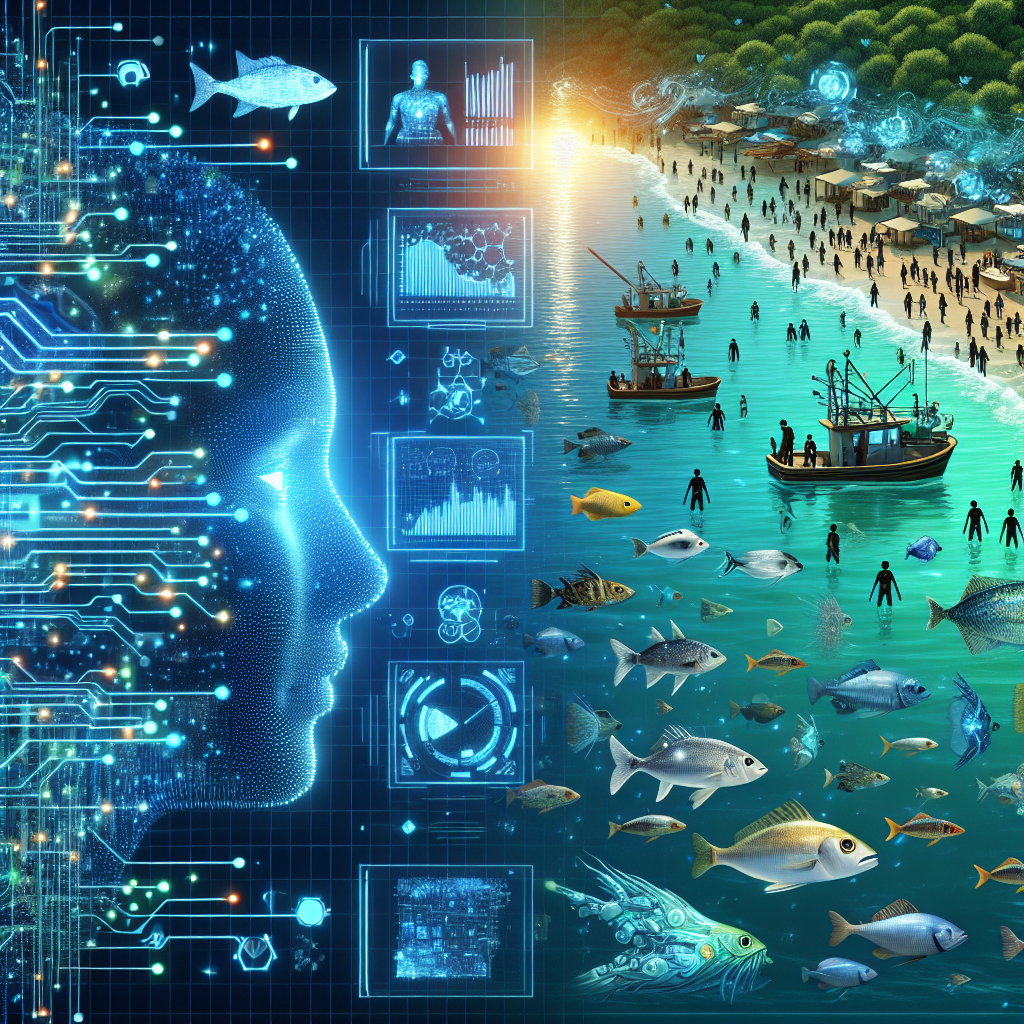The Impact of AI on Sustainable Fisheries Management
Introduction
The world’s oceans are a vital resource for food, livelihoods, and biodiversity. However, overfishing, illegal fishing, and climate change are threatening the health and sustainability of our marine ecosystems. In order to address these challenges, it is essential to have effective fisheries management practices in place. Artificial intelligence (AI) is increasingly being used to improve the efficiency and effectiveness of fisheries management, with the potential to revolutionize the way we monitor and regulate fishing activities.
AI in Fisheries Monitoring
One of the key areas where AI is making an impact on fisheries management is in monitoring fishing activities. Traditional methods of monitoring, such as observer programs and satellite tracking, can be costly, time-consuming, and limited in their scope. AI technology, on the other hand, can process vast amounts of data from a variety of sources in real-time, providing a more comprehensive and accurate picture of fishing activities.
For example, AI-powered algorithms can analyze data from satellite imagery to detect and track fishing vessels, even in remote or poorly monitored areas. This can help authorities identify illegal fishing activities, enforce regulations, and ensure compliance with sustainable fishing practices. AI can also be used to analyze data from onboard sensors, such as GPS and fish finders, to monitor fishing effort, track catch sizes, and assess the health of fish populations.
AI in Fisheries Management
In addition to monitoring fishing activities, AI is also being used to improve fisheries management practices. By analyzing data on fish populations, environmental conditions, and fishing pressure, AI can help fisheries managers make more informed decisions about quota setting, stock assessments, and conservation measures. AI can also be used to predict the impact of climate change on fish populations, helping to guide adaptive management strategies.
AI technology can also help improve the efficiency of fisheries management by automating routine tasks, such as data processing and analysis. This can free up resources for more strategic decision-making and enable fisheries managers to respond more quickly to emerging threats and opportunities. AI can also help identify patterns and trends in data that may not be apparent to human analysts, leading to more effective and targeted management interventions.
Challenges and Opportunities
While AI has the potential to revolutionize fisheries management, there are also challenges that must be addressed. One of the key challenges is ensuring that AI technologies are accessible and affordable for all stakeholders, including small-scale fishers and developing countries. There is also a need to address concerns about data privacy, transparency, and accountability in the use of AI for fisheries management.
Despite these challenges, there are significant opportunities for AI to improve the sustainability of fisheries management. By providing better data and analysis, AI can help ensure that fisheries are managed in a way that is ecologically sustainable, economically viable, and socially equitable. AI can also help build capacity for effective fisheries management in developing countries, where resources and expertise may be limited.
FAQs
Q: How can AI help detect illegal fishing activities?
A: AI can analyze data from satellite imagery to detect and track fishing vessels, even in remote or poorly monitored areas. This can help authorities identify illegal fishing activities and enforce regulations.
Q: What are the benefits of using AI in fisheries management?
A: AI can improve the efficiency and effectiveness of fisheries management by providing better data and analysis, automating routine tasks, and identifying patterns and trends in data that may not be apparent to human analysts.
Q: What are some of the challenges of using AI in fisheries management?
A: Some of the challenges include ensuring that AI technologies are accessible and affordable for all stakeholders, addressing concerns about data privacy and accountability, and building capacity for effective fisheries management in developing countries.
Q: How can AI help improve the sustainability of fisheries management?
A: By providing better data and analysis, AI can help ensure that fisheries are managed in a way that is ecologically sustainable, economically viable, and socially equitable. AI can also help predict the impact of climate change on fish populations and guide adaptive management strategies.
Conclusion
The impact of AI on sustainable fisheries management is significant and growing. By improving the efficiency and effectiveness of fisheries monitoring and management practices, AI can help ensure the long-term health and sustainability of our marine ecosystems. However, there are challenges that must be addressed to realize the full potential of AI in fisheries management, including issues of accessibility, affordability, data privacy, and capacity building. With the right policies and investments, AI has the potential to revolutionize the way we manage our fisheries and ensure a more sustainable future for our oceans.

